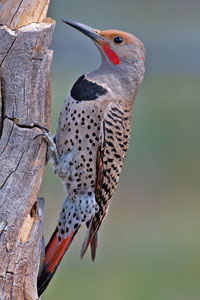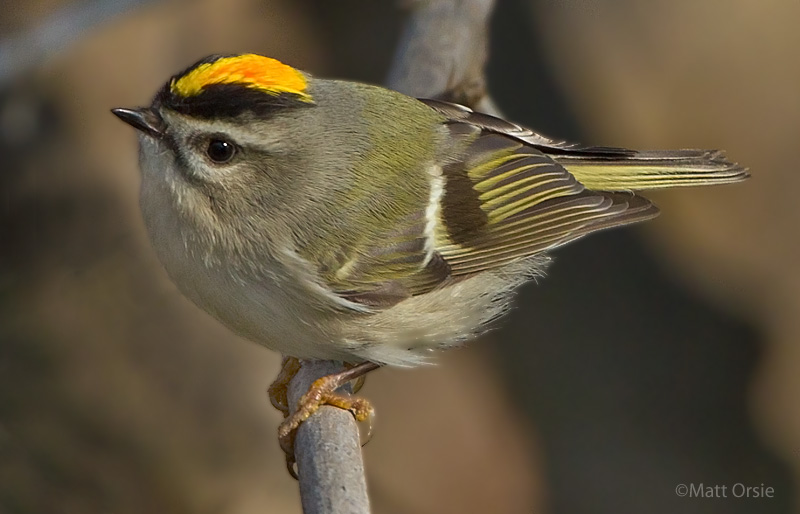 |
| Nature Mapping Foundation - Northern Flicker |
I think the most interesting thing I learned about birds specifically was how long a woodpecker's tongue is (and that it even had/used a tongue for catching bugs), and that when the tongue retracts it splits into opposite sides of the woodpecker's cranial cavity.
 |
| Matt Orsie - Golden-crowned Kinglet |
One bird that was a real treat to see and learn about was the Golden-crowned Kinglet. These are very easy to identify by sight as they have a chickadee-like body with a distinct yellow-orange patch along the top of their head. They stay in groups for survival and stick mostly to dense trees that hide their position. They are songbirds though so they can also be identified rather quickly by sound when you know what to listen for.
Special thanks to Dave! |
I also found the the woodpecker tongue to be interesting as it's an adaptation with two purposes, to eat and cushion against constantly banging its head.
ReplyDeleteI agree with Nick, hearing about the Woodpecker's tongue was really interesting. It's amazing how diverse birds are, and how their diversity signals a variety of adaptations.
ReplyDelete